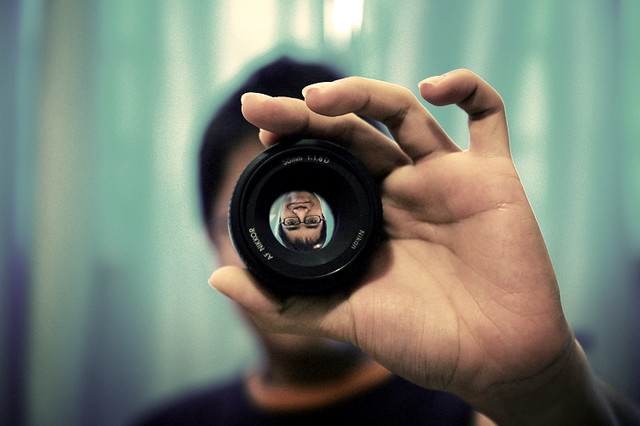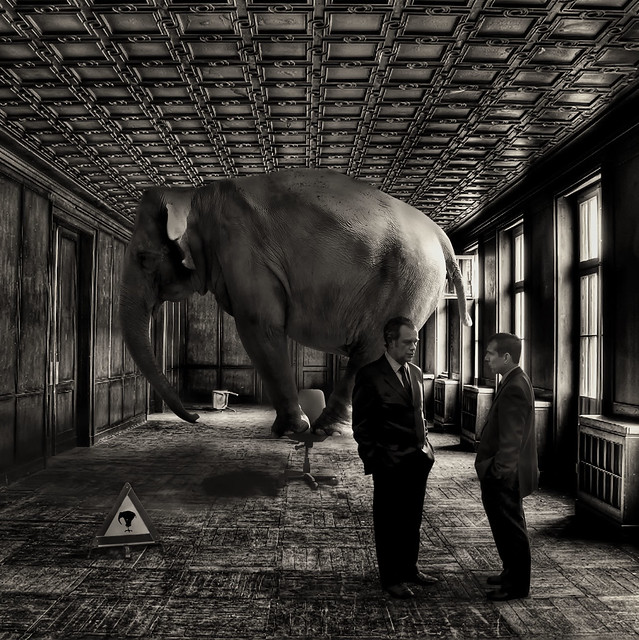Archive for June, 2019
Innovation Truths
 If it’s not different, it can’t be innovation.
If it’s not different, it can’t be innovation.
With innovation, ideas are the easy part. The hard part is creating the engine that delivers novel value to customers.
The first goal of an innovation project is to earn the right to do the second hardest thing. Do the hardest thing first.
Innovation is 50% customer, 50% technology and 75% business model.
If you know how it will turn out, it’s not innovation.
Don’t invest in a functional prototype until customers have placed orders for the sell-able product.
If you don’t know how the customer will benefit from your innovation, you don’t know anything.
If your innovation work doesn’t threaten the status quo, you’re doing it wrong.
Innovation moves at the speed of people.
If you know when you’ll be finished, you’re not doing innovation.
With innovation, the product isn’t your offering. Your offering is the business model.
If you’re focused on best practices, you’re not doing innovation. Innovation is about doing things for the first time.
If you think you know what the customer wants, you don’t.
Doing innovation within a successful company is seven times hard than doing it in a startup.
If you’re certain, it’s not innovation.
With innovation, ideas and prototypes are cheap, but building the commercialization engine is ultra-expensive.
If no one will buy it, do something else.
Technical roadblocks can be solved, but customer/market roadblocks can be insurmountable.
The first thing to do is learn if people will buy your innovation.
With innovation, customers know what they don’t want only after you show them your offering.
With innovation, if you’re not scared to death you’re not trying hard enough.
The biggest deterrent to innovation is success.
Image credit — Sherman Geronimo-Tan
Seeing Things as They Can’t Be
 When there’s a big problem, the first step is to define what’s causing it. To do that, based on an understanding of the physics, a sequence of events is proposed and then tested to see if it replicates the problem. In that way, the team must understand the system as it is before the problem can be solved.
When there’s a big problem, the first step is to define what’s causing it. To do that, based on an understanding of the physics, a sequence of events is proposed and then tested to see if it replicates the problem. In that way, the team must understand the system as it is before the problem can be solved.
Seeing things as they are. The same logic applies when it’s time to improve an existing product or service. The first thing to do is to see the system as it is. But seeing things as they are is difficult. We have a tendency to see things as we want them or to see them in ways that make us look good (or smart). Or, we see them in a way that justifies the improvements we already know we want to make.
To battle our biases and see things as they are, we use tools such as block diagrams to define the system as it is. The most important element of the block diagram is clarity. The first revision will be incorrect, but it must be clear and explicit. It must describe things in a way that creates a singular understanding of the system. The best block diagrams can be interpreted only one way. More strongly, if there’s ambiguity or lack of clarity, the thing has not yet risen to the level of a block diagram.
The block diagram evolves as the team converges on a single understanding of things as they are. And with a diagram of things as they are, a solution is readily defined and validated. If when tested the proposed solution makes the problem go away, it’s inferred that the team sees things as they are and the solution takes advantage of that understanding to make the problem go away.
Seeing things as they may be. Even whey the solution fixes the problem, the team really doesn’t know if they see things as they are. Really, all they know is they see things as they may be. Sure, the solution makes the problem go away, but it’s impossible to really know if the solution captures the physics of failure. When the system is large and has a lot of moving parts, the team cannot see things as they are, rather, they can only see the system as it may be. This is especially true if the system involves people, as people behave differently based on how they feel and what happened to them yesterday.
There’s inherent uncertainty when working with larger systems and systems that involve people. It’s not insurmountable, but you’ve got to acknowledge that your understanding of the system is less than perfect. If your company is used to solving small problems within small systems, there will be little tolerance for the inherent uncertainty and associated unpredictability (in time) of a solution. To help your company make the transition, replace the language of “seeing things as they are” with “seeing things as they may be.” The same diagnostic process applies, but since the understanding of the system is incomplete or wrong, the proposed solutions cannot not be pre-judged as “this will work” and “that won’t work.” You’ve got to be open to all potential solutions that don’t contradict the system as it may be. And you’ve got to be tolerant of the inherent unpredictability of the effort as a whole.
Seeing things as they could be. To create something that doesn’t yet exist, something does things like never before, something altogether new, you’ve got to stand on top of your understanding of the system and jump off. Whether you see things as they are or as they may be, the new system will be different. It’s not about diagnosing the existing system; it’s about imagining the system as it could be. And there’s a paradox here. The better you understand the existing system, the more difficulty you’ll have imagining the new one. And, the more success the company has had with the system as it is, the more resistance you’ll feel when you try to make the system something it could be.
Seeing things as they could be takes courage – courage to obsolete your best work and courage to divest from success. The first one must be overcome first. Your body creates stress around the notion of making yourself look bad. If you can create something altogether better, why didn’t you do it last time? There’s a hit to the ego around making your best work look like it’s not all that good. But once you get over all that, you’ve earned the right to go to battle with your organization who is afraid to move away from the recipe responsible for all the profits generated over the last decade.
But don’t look at those fears as bad. Rather, look at them as indicators you’re working on something that could make a real difference. Your ego recognizes you’re working on something better and it sends fear into your veins. The organization recognizes you’re working on something that threatens the status quo and it does what it can to make you stop. You’re onto something. Keep going.
Seeing things as they can’t be. This is rarified air. In this domain you must violate first principles. In this domain you’ve got to run experiments that everyone thinks are unreasonable, if not ill-informed. You must do the opposite. If your product is fast, your prototype must be the slowest. If the existing one is the heaviest, you must make the lightest. If your reputation is based on the highest functioning products, the new offering must do far less. If your offering requires trained operators, the new one must prevent operator involvement.
If your most seasoned Principal Engineer thinks it’s a good idea, you’re doing it wrong. You’ve got to propose an idea that makes the most experienced people throw something at you. You’ve got to suggest something so crazy they start foaming at the mouth. Your concepts must rip out their fillings. Where “seeing things as they could be” creates some organizational stress, “seeing things as they can’t be” creates earthquakes. If you’re not prepared to be fired, this is not the domain for you.
All four of these domains are valuable and have merit. And we need them all. If there’s one message it’s be clear which domain you’re working in. And if there’s a second message it’s explain to company leadership which domain you’re working in and set expectations on the level of uncertainty and unpredictability of that domain.
Image credit – David Blackwell.
Don’t change culture. Change behavior.
 There’s always lots of talk about culture and how to change it. There is culture dial to turn or culture level to pull. Culture isn’t a thing in itself, it’s a sentiment that’s generated by behavioral themes. Culture is what we use to describe our worn paths of behavior. If you want to change culture, change behavior.
There’s always lots of talk about culture and how to change it. There is culture dial to turn or culture level to pull. Culture isn’t a thing in itself, it’s a sentiment that’s generated by behavioral themes. Culture is what we use to describe our worn paths of behavior. If you want to change culture, change behavior.
At the highest level, you can make the biggest cultural change when you change how you spend your resources. Want to change culture? Say yes to projects that are different than last year’s and say no to the ones that rehash old themes. And to provide guidance on how to choose those new projects create, formalize new ways you want to deliver new value to new customers. When you change the criteria people use to choose projects you change the projects. And when you change the projects people’s behaviors change. And when behavior changes, culture changes.
The other important class of resources is people. When you change who runs the project, they change what work is done. And when they prioritize a different task, they prioritize different behavior of the teams. They ask for new work and get new behavior. And when those project leaders get to choose new people to do the work, they choose in a way that changes how the work is done. New project leaders change the high-level behaviors of the project and the people doing the work change the day-to-day behavior within the projects.
Change how projects are chosen and culture changes. Change who runs the projects and culture changes. Change who does the project work and culture changes.
Image credit – Eric Sonstroem
When it rains, don’t blame the clouds.

When it rains, you get wet. It doesn’t matter if you get mad at the clouds, you still get wet. And if you curse the sky, you still get wet. So, why the anger and cursing? Do you really think the clouds see you’re outside and choose to rain on you? Do you think the sky is out to get you?
When someone aims snarl words at you, you get angry because you take it personally. But, their harsh words are about them, not you. And they’re not aiming at you; you just happen to be near them when the words jump out of their mouth. Like the clouds don’t choose to rain on you; you just happen to be under them when their water comes out.
It’s much easier to accept that the clouds are not out to get you because the clouds are not people. It takes a lot of personal work to let someone’s snarl words pass through you. But if a screen door can do it, so can you.
The screen door lets the breeze pass through. It doesn’t flap or flutter, it just lets the hot air pass. It’s there when it’s time to block the bugs but not there when it’s time to let the breeze pass. The screen door doesn’t take the breeze personally, it lets it pass through.
When someone snarls at you, be a screen door and let those words pass through. Try to remember their words are about them, not you. When the snarl words are swirling, don’t be there emotionally. Don’t own their words; don’t accept their gift. Don’t be there emotionally.
But after the storm of words dissipates, be there for them. Ask them what’s bothering them. Listen. Try to understand. Empathize. I bet you’ll learn what’s really going on with them.
In the heat of the moment, it’s easy to take things personally. But if you visualize them as a cloud, maybe you can weather the storm they are trying to create. Or, it may be easier to imagine yourself as a screen door and let their words pass.
Either way, cloud or screen door, it takes practice. And either way, it can make a big difference in your happiness.
 Mike Shipulski
Mike Shipulski